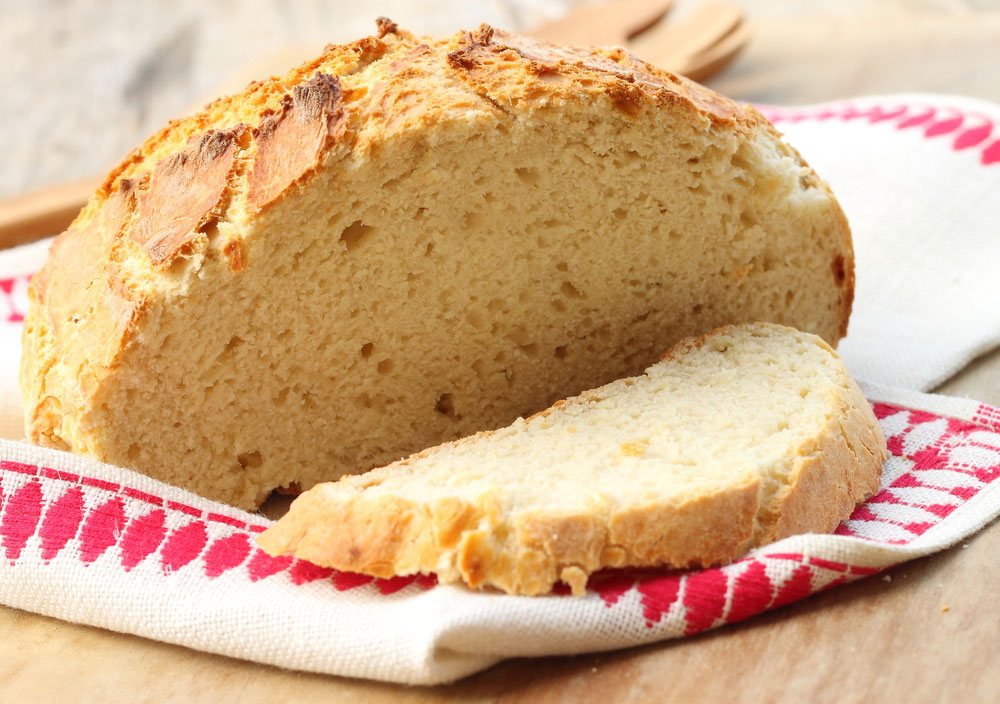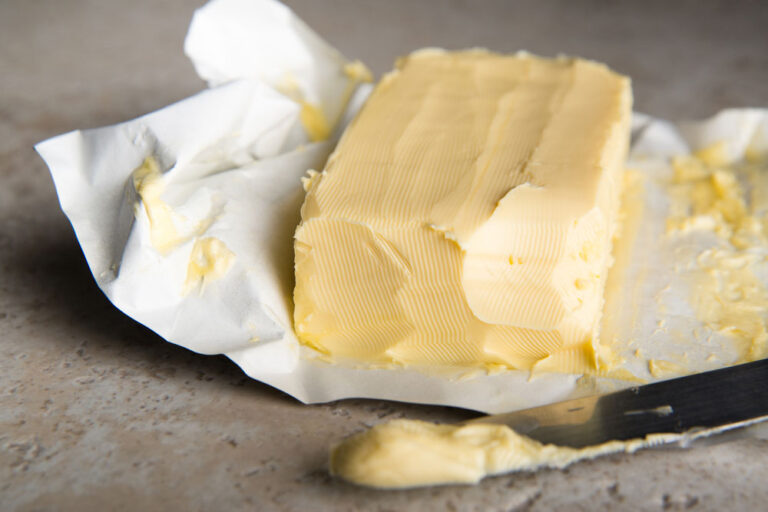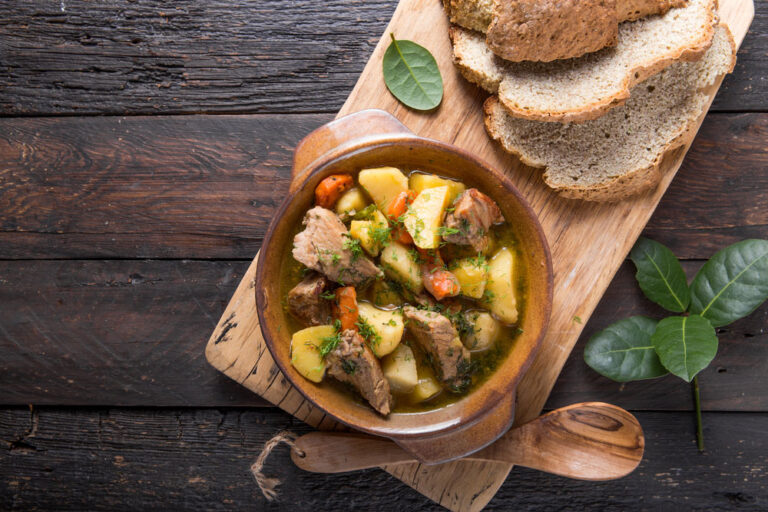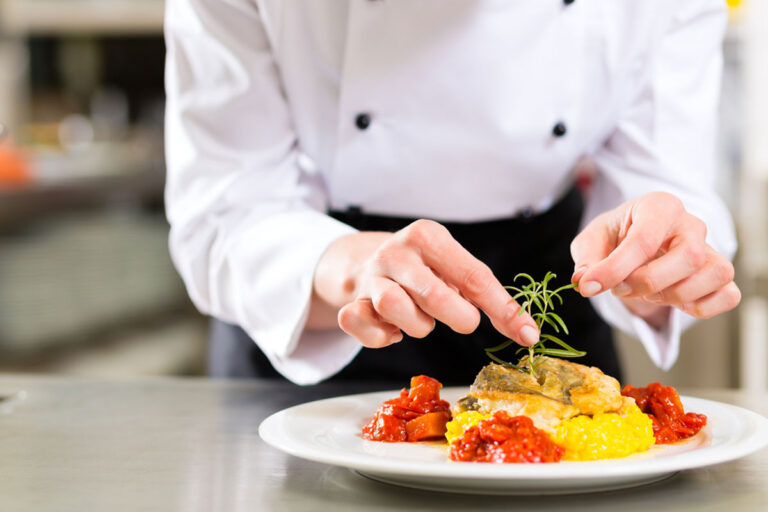The Allure of Irish Soda Bread
The attraction of Irish Soda Bread stretches well beyond the Emerald Isle. With its unique history, simple ingredients, and distinct qualities, this renowned bread has captivated both locals and culinary fans worldwide.
A Humble Beginning
Irish Soda Bread dates back to the nineteenth century, when it first became popular in Irish families. Due to a lack of access to pricey yeast and baking equipment, enterprising Irish bakers created a simple yet extremely tasty bread using only the most basic ingredients: flour, baking soda, salt, and soured milk, sometimes in the form of buttermilk. When baking soda was used as a leavening ingredient in conjunction with acidic buttermilk or sour milk, a chemical reaction occurred, causing the bread to rise without the assistance of yeast.
Easily Recognizable
One of the most appealing aspects of Irish Soda Bread is its delightfully crumbly texture and dense yet soft interior. The bread has a rustic appearance and is frequently ornamented with a characteristic cross cut into the top. This cross has two functions: it allows heat to permeate the thickest section of the loaf and also acts as a sign of blessing and protection for the home.
A Multipurpose Canvas
Irish Soda Bread is more than simply a tasty bread; it also serves as a blank canvas for numerous additives and flavors. While the classic form is beloved for its simplicity, bakers frequently add their own distinctive touches to produce new varieties, such as using dried fruits, nuts, seeds, or herbs. Some modern interpretations add a hint of sweetness with the addition of sugar or honey, resulting in sweeter versions such as “Spotted Dog.”
Every Occasion’s Bread
Irish Soda Bread is a bread for any occasion, from a warm and comforting complement to substantial stews and soups to a wonderful delicacy smeared with butter and jam for afternoon tea. Its rapid preparation time and low hassle make it a popular choice for busy households, and it is still a popular item on the menus of traditional Irish pubs and restaurants.
A Culinary Global Ambassador
As people from all over the world discover the charm of Irish Soda Bread, it has crossed cultural borders to become Ireland’s global culinary ambassador. This bread continues to link people with the rich history and warm hospitality of the Irish culture, whether it’s served in a quaint Irish hamlet or relished in a bustling city café.
Finally, the allure of Irish Soda Bread resides not only in its exquisite taste and simplicity, but also in its rich history and cultural significance. From its humble beginnings to its ongoing popularity, this unique bread has become a symbol of Irish innovation as well as a beloved culinary treasure that has found a home in people’s hearts and kitchens all over the world.
Barmbrack: Unraveling the Spiced Fruit Bread
Barmbrack, also known as báirn breac in Irish, is a traditional spiced fruit bread that is especially popular during the holiday seasons of Halloween and St. Patrick’s Day. Due to the presence of numerous dried fruits within the bread, its name, “barmbrack,” is derived from the Irish words “bairn” (loaf) and “breac” (speckled). Dive into the history and customs around Barmbrack and you’ll discover a fascinating tapestry of traditions and superstitions passed down through generations.
Festive Origins and Seasonal Importance
Barmbrack has profound roots to Irish customs, especially on the eve of All Hallows’ Day (November 1st), which is commemorated on the eve of Halloween. Before baking, a ring, a coin, a pea, a piece of cloth, a little stick, and a thimble are traditionally hidden within the dough. The ring represents marriage or romance; the coin predicts wealth or good fortune; the pea predicts that the recipient will not marry that year; the cloth represents bad luck or poverty; the stick represents an unhappy marriage or disputes; and the thimble predicts that the person will remain single. The finding of these hidden trinkets adds an element of fun and intrigue to the festivities as the bread is sliced and divided among family and friends during Halloween parties.
Barmbrack tells fortunes
Historically, Barmbrack was a key figure in divination during Halloween rituals. It was thought that the items buried in the bread would provide future predictions to anyone who found them in their slices. Young and old alike would excitedly await their slice, hoping to discover the concealed things that would disclose their fates for the coming year. This ritual brought a sense of mystery and excitement to the celebratory gathering, making Barmbrack an important aspect of Irish Halloween traditions.
Connection to St. Patrick’s Day
While Halloween is most strongly associated with Barmbrack, it also has importance for another important Irish holiday—St. St. Patrick’s Day. Barmbrack may be offered as part of a special breakfast or afternoon tea on this day, where family and friends gather to enjoy the bread and other traditional Irish goodies. Its continued appearance at these festivals cements its role in Irish culture and cuisine.
A Delectable Tradition
The fascination of Barmbrack extends beyond its folklore and customs; its allure rests in its delectable flavor and perfume. The combination of moist, lightly spiced bread with plump, luscious, soaked dried fruits results in a delightful experience that everyone who tastes it remembers. Barmbrack highlights the harmonic mix of soothing tastes that has lasted the test of time, whether served simply with a generous smear of butter or toasted for extra warmth.
A Family Recipe
Passing along the art of crafting Barmbrack from generation to generation has long been a treasured custom among Irish households. Like many traditional foods, the recipe has distinctive modifications and hidden family touches, making each loaf a monument to its maker’s love and culinary heritage.
Finally, researching the history and rituals surrounding Barmbrack reveals a time-honored tradition that has become an essential element of Irish festivals. Aside from its delectable flavors, Barmbrack represents the spirit of unity and the joy of sharing with loved ones—a treasured reminder of the rich cultural legacy that lives on in Irish hearts around the world.
Brown Bread: Hearty and Wholesome
Brown bread, often known as wholemeal bread, is a valued staple in Irish households, and its significance goes beyond food. This substantial and nutritious bread has a special place in Irish culture, representing the country’s rich agricultural heritage and close relationship with the land. Understanding the significance of brown bread in Irish households offers light on its role in shaping Irish culinary history.
Land-based nutrition
Brown bread has a long history in Ireland as a traditional dish created with simple ingredients derived from the countryside. It encapsulates the essence of Irish agriculture, where wheat and grains have been grown for millennia to nourish families and communities. The rustic texture and earthy flavor of the bread attest to its humble origins and the bountiful wealth of Irish farmlands.
Complete Nutrition
Brown bread, as a whole-grain bread, is naturally high in nutrition, fiber, and important minerals. The use of wholemeal flour, which contains the bran and germ of the grain, makes the bread a wholesome and nutritious option. Its high fiber content supports digestion and promotes gut health, while the vitamins and minerals found in grains contribute to general wellness. Brown bread is cherished in Irish households not just for its taste but also for its nutritious features, making it a go-to choice for a balanced diet.
A Home and Hospitality Symbol
A freshly baked loaf of brown bread is an age-old custom in Ireland that epitomizes warmth and friendliness. Offering a slice of this bread, sometimes with a big spread of butter, represents the authentic Irish attitude of hospitality and inclusion. Brown bread is a sign of home and hearth, generating sentiments of comfort and belonging and making guests feel welcome.
A Link to Ancestral Roots
The art of baking brown bread has been passed down through generations in many Irish families, generating a deep relationship to ancestral customs. Family recipes and traditions are prized heirlooms, and baking brown bread becomes a means to remember the past while celebrating the present. Baking brown bread with family members is a bonding experience that develops a sense of continuity and shared heritage.
Culinary Versatility
Because of its adaptability, brown bread is a popular companion to a broad variety of Irish cuisine. It adds a substantial and healthy addition to meals by complementing robust stews, soups, and Irish seafood. Brown bread also goes well with cheese, smoked salmon, and traditional spreads, making it an excellent choice for picnics, get-togethers, and afternoon teas.
Finally, the significance of brown bread in Irish households goes much beyond its status as a staple food item. It represents the essence of Irish agriculture, family traditions, and the spirit of hospitality and connection. Brown bread is valued as a fundamental element of Irish culinary tradition, passing on the taste of Ireland to new generations and generating enduring memories around the table due to its nutritious nutrition and adaptability.
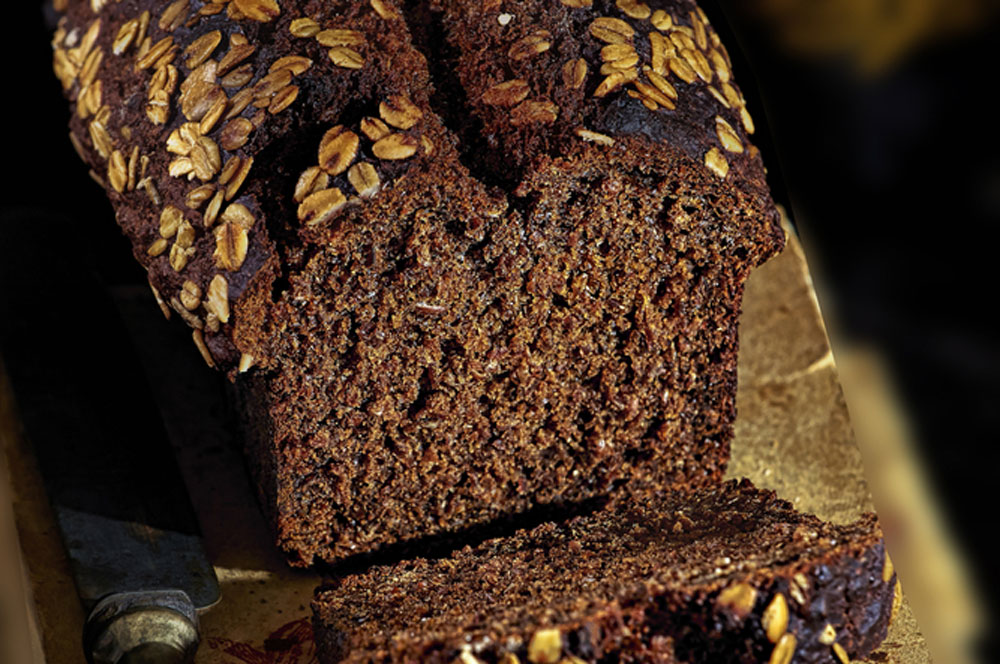
Regional Bread Varieties Beyond Soda Bread
Aside from the classic Irish Soda Bread, Ireland has a rich and diverse array of regional bread variations that represent the country’s unique culinary traditions and local ingredients. Exploring these lesser-known breads takes us on a fascinating tour through Ireland’s diverse regions, each with its own delectable masterpieces cherished by generations.
Northern Irish Wheaten Bread
Wheat bread is a nutritious and hearty loaf from Northern Ireland prepared mostly with whole wheat flour. The presence of treacle or honey in the recipe gives it a moist and slightly sweet flavor. Wheaten bread, which is often cooked in round forms, is typically relished sliced and smeared with butter or served alongside substantial soups and stews. Its rich texture and nutty flavor make it a Northern Irish household staple, perfectly reflecting the essence of this lovely region.
Waterford’s Blaa
Blaa is a soft and doughy white bread roll with a floury crust that originated in Waterford. It gets its name from the French word “blanc,” which means “white.” According to legend, French Huguenot bakers brought their abilities to Waterford in the 17th century and introduced this unique bread roll. Blaa is now an important part of Waterford’s culinary character, and people frequently enjoy it as a breakfast roll filled with various fillings such as sausages, bacon, or butter.
County Armagh’s Barmbrack
While barmbrack is well-known in Irish folklore, the County Armagh version has its own specific qualities. This delicious loaf is a holiday and special occasion classic. Barmbrack from County Armagh is richly packed with a variety of dried fruits and spices and is frequently soaked in tea or even whiskey to infuse it with rich tastes. It’s a beloved dessert that wonderfully captures the essence of the region’s festivities and celebrations.
Ulster Potato Bread (Fadge)
Potato bread, often known as fadge, is a delectable bread made from potatoes, flour, and occasionally buttermilk. This bread, which originated in the region of Ulster, has a soft and pillowy texture as well as a slightly nutty flavor. It is often baked on a griddle or skillet to get a golden brown crust. Potato bread lends a unique and comforting touch to an Ulster Fry—a full breakfast with sausages, bacon, eggs, and other goodies.
Brown Soda Bread from Ireland’s West
While soda bread is popular throughout Ireland, the West of Ireland is noted for its thick and deep brown soda bread. This type of soda bread, made with wholemeal flour and a combination of treacle and buttermilk, has a powerful and earthy flavor that represents the region’s rough landscape. Brown soda bread from the West is a culinary wonder whether served with a large dollop of Irish butter or beside a bowl of seafood soup.
Finally, Ireland’s regional bread variants go far beyond the well-known soda bread, providing a broad and delectable array of tastes and textures that embody the individual qualities of each region. From Northern Ireland’s substantial wheaten bread to Waterford’s delicate blaa, each bread variation represents the rich culinary heritage and local ingredients that have made Irish bread baking a lasting tradition. Exploring these lesser-known breads reveals the abundance of culinary wonders that can be found in every area of Ireland.
Traditional Irish Bread with a Modern Twist
A surge of culinary ingenuity has swept across Ireland in recent years, bringing with it a delicious assortment of new twists on traditional Irish bread. While traditional soda bread and brown bread remain favorites among Irish people, these modern modifications and unique recipes have given fresh life to the age-old bread-making tradition, appealing to both traditionalists and adventurous food fans.
Superfood Seeded Soda Bread
As health-conscious eating becomes more fashionable, several bakers have began integrating nutrient-dense seeds into soda bread recipes, such as chia seeds, flaxseeds, and pumpkin seeds. This seeded superfood soda bread not only adds a crunchy texture to the bread but also increases its nutritional profile by providing omega-3 fatty acids, fiber, and numerous vitamins and minerals. As a result, the loaf is healthful and flavorful, appealing to individuals seeking both taste and wellness in their bread.
A Global Take on Irish Soda Bread
Some daring bakers have combined Irish soda bread with exotic aromas inspired by different cuisines. Variations such as “Curry Soda Bread” and “Sun-dried Tomato and Basil Soda Bread” provide unexpected surprises with each bite. These fusions combine the best of Irish baking traditions with worldwide flavors, allowing aficionados to enjoy a wonderful blend of Irish heritage and global gastronomy.
Brown Bread with Savory Cheese and Herbs
Brown bread is normally served with butter and jam, but a savory variation has evolved with the addition of strong Irish cheddar cheese and a variety of fresh herbs such as thyme, rosemary, and chives. This cheesy and herbaceous brown bread is ideal for accompanying soups, salads, and charcuterie boards, providing a pleasant savory alternative to the traditional sugary accompaniments.
Chocolate Chip Spotted Dog
Spotted Dog’s nostalgic appeal has inspired a new adaption in the form of a dessert bread. The comforting pleasure of traditional soda bread is combined with the decadent sweetness of chocolate chips in Chocolate Chip Spotted Dog. This treat is popular with both children and adults, making it an excellent complement to afternoon tea or a special dessert for special occasions.
Vegan and gluten-free options
To meet the growing demand for vegan and gluten-free options, creative bakers have developed recipes for vegan soda bread and gluten-free brown bread that satisfy dietary restrictions without sacrificing taste or texture. These breads provide tasty solutions for those with dietary limitations by utilizing plant-based alternatives and gluten-free flours, ensuring that everyone may enjoy the essence of Irish bread.
Finally, new variations on traditional Irish bread have inspired a gastronomic rebirth in Ireland’s baking sector. From healthy seeded soda bread to foreign fusions and ingenious adaptations, these inventive dishes take treasured classics to new heights, reflecting Ireland’s dynamic and diverse culinary environment today. Whether it’s the nostalgia of Chocolate Chip Spotted Dog or the indulgence of a vegan and gluten-free version, these modern breads demonstrate the ongoing attractiveness and adaptability of Irish bread-making traditions for future generations.
Some of our favorite Irish bread recipes:
IRISH SODA BREAD
IRISH BROWN BREAD
CELTIC HERB BREAD
GUINNESS BREAD
